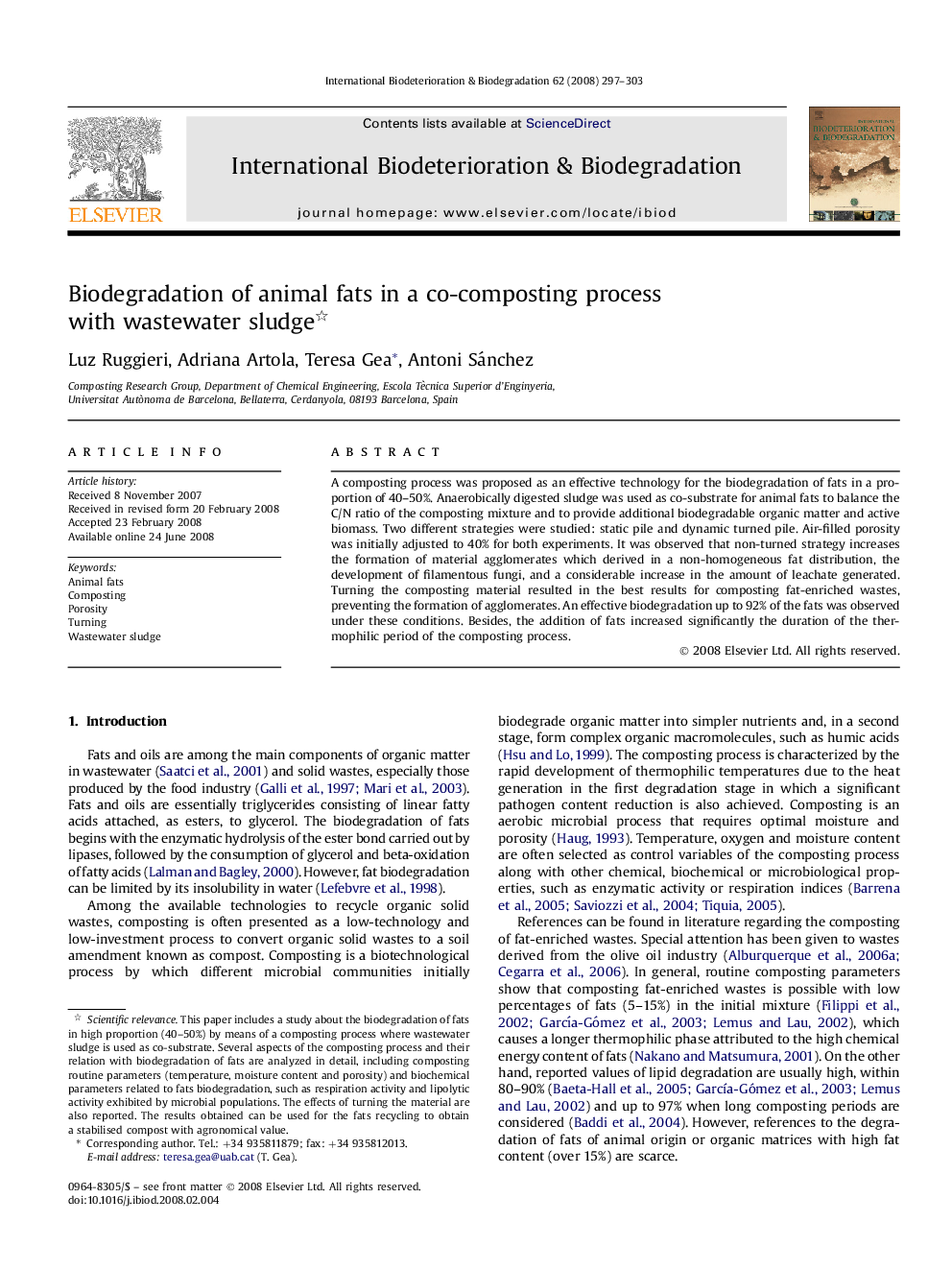| Article ID | Journal | Published Year | Pages | File Type |
|---|---|---|---|---|
| 4365695 | International Biodeterioration & Biodegradation | 2008 | 7 Pages |
A composting process was proposed as an effective technology for the biodegradation of fats in a proportion of 40–50%. Anaerobically digested sludge was used as co-substrate for animal fats to balance the C/N ratio of the composting mixture and to provide additional biodegradable organic matter and active biomass. Two different strategies were studied: static pile and dynamic turned pile. Air-filled porosity was initially adjusted to 40% for both experiments. It was observed that non-turned strategy increases the formation of material agglomerates which derived in a non-homogeneous fat distribution, the development of filamentous fungi, and a considerable increase in the amount of leachate generated. Turning the composting material resulted in the best results for composting fat-enriched wastes, preventing the formation of agglomerates. An effective biodegradation up to 92% of the fats was observed under these conditions. Besides, the addition of fats increased significantly the duration of the thermophilic period of the composting process.
